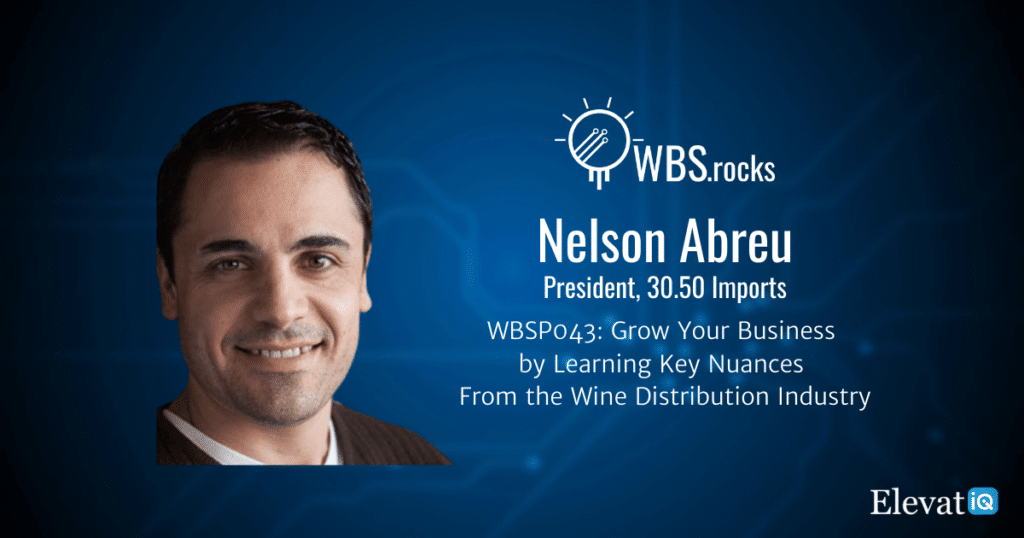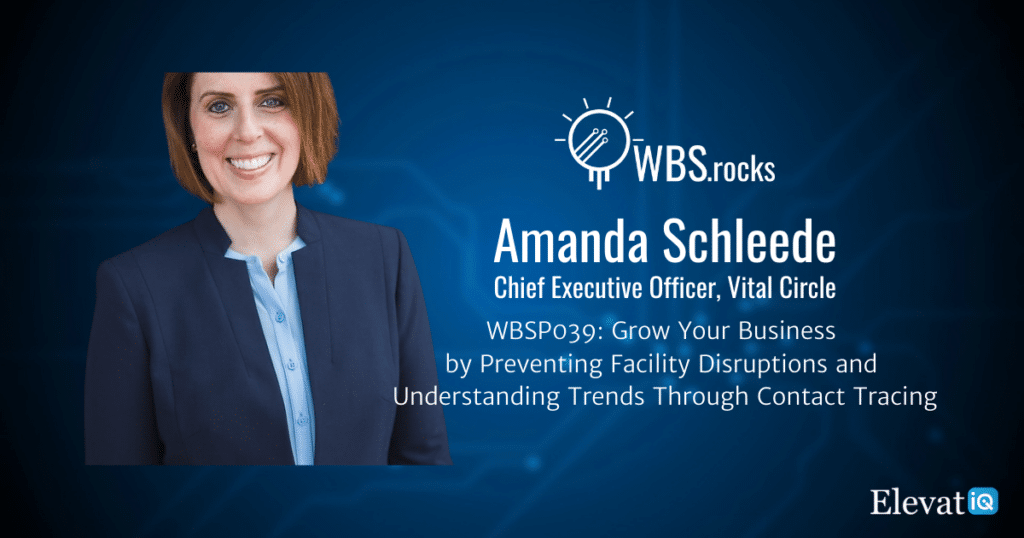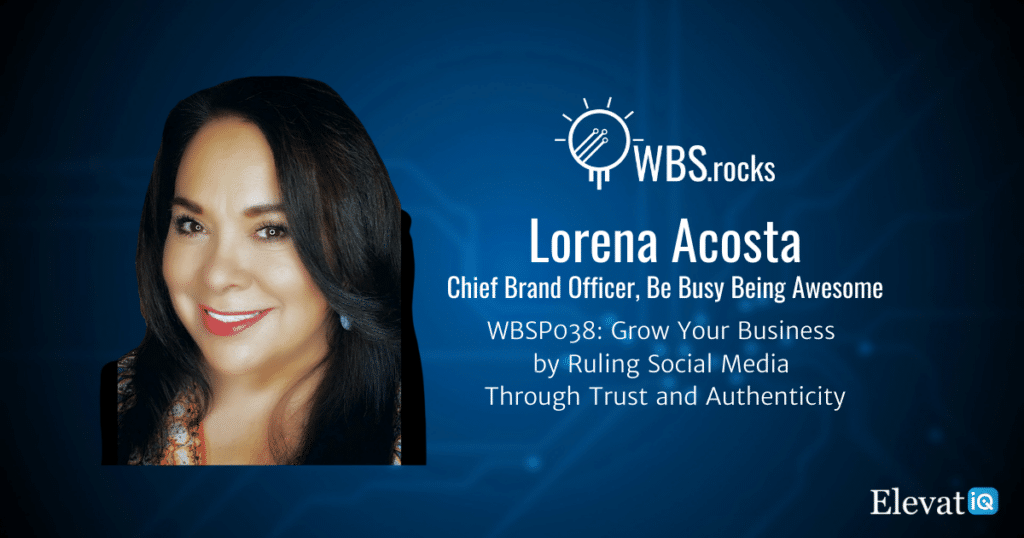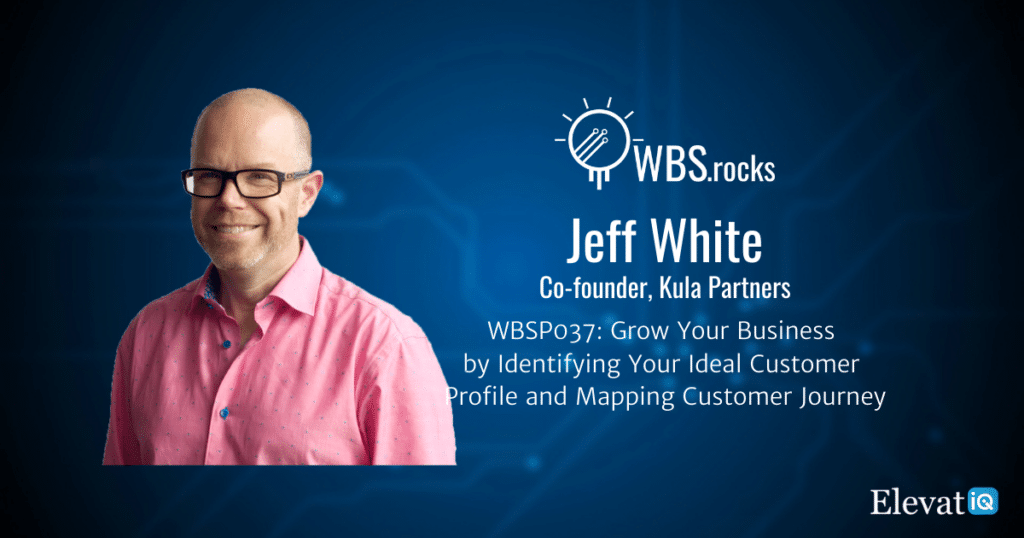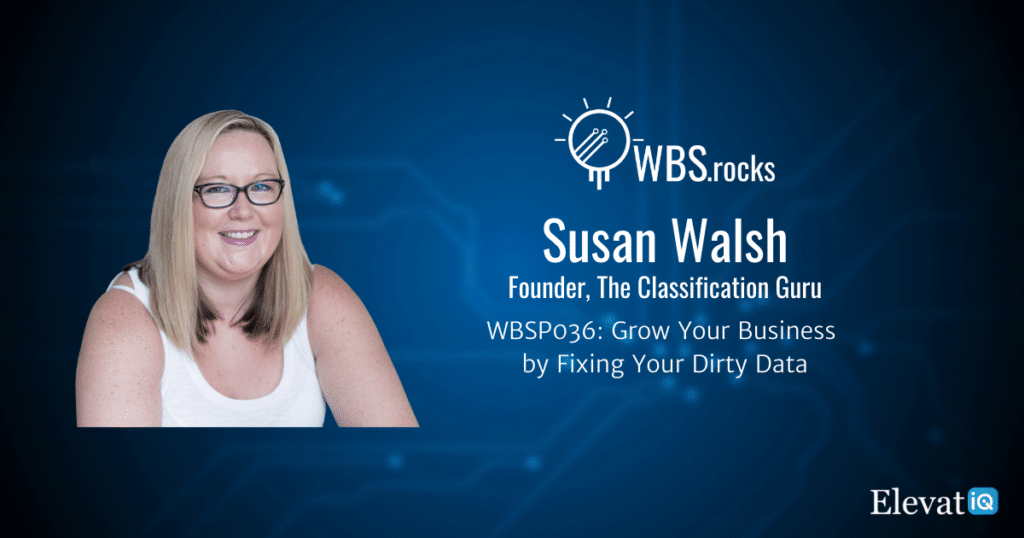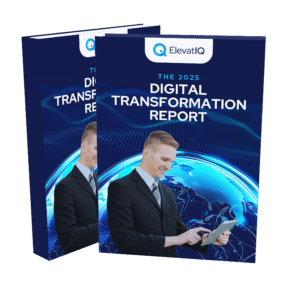WBSP045: Grow Your Business Through Reshoring Initiatives w/ Harry Moser
In this episode, we have our guest Harry Mosner from Reshoring Initiative, who discusses how to compute the total cost of ownership of reshoring initiatives. He also shares several stories of manufacturers where they could reduce the costs and increase sales through reshoring initiatives. Finally, he sheds light on manufacturing verticals and components that benefit most from the reshoring initiatives.
Chapter Markers
- [0:19] Intro
- [2:30] Personal journey and current focus
- [4:02] Perspective on growth
- [5:36] How reshoring can help
- [7:42] Offshoring vs reshoring
- [13:11] TCO computation for ERP initiatives
- [14:03] Profitability because of reshoring vs offshoring
- [16:31] The process for sourcing from China
- [19:31] Mexico vs China sourcing
- [29:16] Resourcing resources for manufacturers
- [30:43] Closing thoughts
- [31:34] Outro
Key Takeaways
- 66% of companies look only at the FOB price. They don’t even look at the landed cost. And so by looking only at the FOB price, they are ignoring duty freight packaging, carrying cost of inventory, no travel costs, intellectual property risk, the benefit of having engineering and manufacturing close to each other, in the same time zone speaking the same language able to improve the product and the process together, the risks may be to stock out.
- 80% of consumers say those US consumers say they’ll spend 10% or more extra forum made in USA product as opposed to say a Chinese product.
- The reason why businesses might not be computing the landed cost at this point in time is that the model could be too complex. But at the same time, when you look at maintaining the ERP system or maintaining the IT system to be able to compute that, then you are going to require more manpower, you are probably going to require system, and so there is going to be some cost associated with that tool.
- The US is 97% dependent on imports of apparel and footwear. And that seems seen as a trend back partially driven by automation, that’s making it a little more competitive to produce those things in the US. The average consumer appears to be favoring domestic consumption because of the benefits of the environment and sustainability, and things like that.

Subscribe and Review
Apple | Spotify | Stitcher | Google Podcasts | Deezer | Player FM | Castbox
About Harry
Harry is the founder of the Reshoring Initiative after being president of GF Machining Solutions for 22 years. His Awards include Industry Week’s Manufacturing Hall of Fame and his active participation in President Obama’s 1/11/12 Insourcing Forum. He is also a member of the Department of Commerce Investment Advisory Council. Harry is frequently quoted in the Wall Street Journal, Forbes, NYT, New Yorker, and USA Today and seen on Fox Business, MarketWatch, and other programs. Harry holds a BS and MS in Engineering from MIT and an MBA from the University of Chicago.
Resources
- Connect with Harry
- Connect with Reshoring Initiative
- Website | Blog | Twitter | LinkedIn Group | Facebook
Full Transcript
Harry Moser 0:00
So the companies go from looking at just the FOB price or price to add 25-30 other costs and risk factors. And when they do that, they see that in many cases, they’ll be more profitable, producing the product in the marketplace.
Intro 0:19
Growing a business requires a holistic approach that extends beyond sales and marketing. This approach needs alignment among people, processes, and technologies. So if you’re a business owner, operations, or finance leader looking to learn growth strategies from your peers and competitors, you’re tuned into the right podcast. Welcome to the WBS podcast, where scalable growth using business systems is our number one priority. Now, here is your host, Sam Gupta.
Sam Gupta 0:55
Hey everyone, welcome back to another episode of The WBS podcast. I’m Sam Gupta, your host and principal consultant at digital transformation consulting firm ElevatIQ.
It’s very rare to relate reshoring initiatives with cost savings and sales growth. It’s typically the opposite. However, if you account for all the costs and risks involved with offshoring or nearshoring, including geopolitical risks, reshoring initiatives can outgrow a company.
In today’s episode, we have a guest Harry Moser from the Reshoring Initiative, who discusses how to compute the total cost of ownership of reshoring initiatives. He also shares several stories of manufacturers where they could reduce the cost and increase sales through reshoring initiatives. Finally, he sheds light on manufacturing verticals and components that benefit most from the reshoring initiatives. Let me introduce Harry to you.
He is the founder of the Reshoring Initiative after being president of GF Machining Solutions for 22 years. His awards include Industry Weeks Manufacturing Hall of Fame and his active participation in President Obama’s January 11, 2012 insourcing forum. He is also a member of the Department of Commerce investment advisory council. Harry is frequently quoted in the Wall Street Journal, Forbes, New York Times, New Yorker, and USA Today and seen on Fox Business Market Watch and other programs. Harry holds a BS and Ms in engineering from MIT and an MBA from the University of Chicago. With that, let’s get to the conversation. Hey, Harry, welcome to the show.
Harry Moser 2:28
Great to be here, Sam
Sam Gupta 2:30
Just to kick things off, do you wanna start with your personal story and your current focus?
Harry Moser 2:36
Sure. So I grew up in Elizabeth, New Jersey, right across the river from the New York ancestral area. My ancestors were the original founders of New Jersey. And the biggest thing in town was the Singer Sewing Machine Company, which my grandfather worked at. My father ran a big part of the factory. The factory was the biggest factory anywhere in the world, in any industry at the time. And I went past five years ago, 10-20 years ago, actually, and the whole thing’s gone.
There’s no singer sewing machine made there anymore. Everything was important. So that personal background was the motivation for my eventually founding the reshoring initiative to bring manufacturing jobs back to the US. Growing up in Elizabeth, went to MIT, got two degrees in engineering, eventually went to the University of Chicago, got an MBA, worked in industry, starting at GE, eventually ran a large Machine Tool Company.
So a company providing CNC machine tools company’s name was Schar. It now is called GF machining solutions. So we sold EDM machines and high-speed milling machines, sold them all over North America, the US, Canada, Mexico. We had a great job, love the job. I was president for 25 years. And we had a wonderful, wonderful record. So it was an I’ve been blessed, have a great family and sons are professor, no great wife, no grandchildren. Everything has been very good.
Sam Gupta 4:02
Okay, amazing. So I definitely want to dig into your story a bit more. But before that, we have one standard question that we asked everyone. And that is going to be your perspective on business growth. What does growth mean to you, Harry?
Harry Moser 4:21
I’ve always been in, especially in sales and marketing. So for me, growth is more orders, bigger order book, but more, more business. And when I joined that company, we were sitting may be seventh in the industry in North America. And within about six years, we were number one, and our sales had tripled or quadrupled. So do growth. That’s my definition of growth. And this is an established solid industry. Not it wasn’t a startup, electronic kind of industry, or software industry.
So then the question is, how did we do that? When I got there, the company was a mess, heart treated the customers horribly. And I got to know the customers, got to know the Salesforce, listened to them all about what their issues were, what were the problems, what do we need to do better. I supported our team to achieve those things. And they understood, and it worked. And like I say, our sales tripled or more in six, seven years. So it was, it was a blessing to have that growth opportunity.
Sam Gupta 5:36
Okay, amazing. So your mandate is to make sure that companies are doing reshoring. Can you tell me how reshoring can help with the business, though?
Harry Moser 5:49
Our mandate is not to do reshoring. Okay, our mandate is to bring manufacturing back. For any given company we are in, our mandate would be to help them make a smarter business decision, which some of the time is reshoring. And some of the time it might be to offshore might be to go some to put the work somewhere else. So we’re not adamant about it.
But we’re objective and logical and measured about it. So for a US company or Canadian company thinking about reshoring, they would choose to reshore because they would be more profitable if they reassured that what we do is help them understand all of the costs and risks associated with offshoring, or reshoring, as the case may be, but there’s a lot more cost and risk associated with offshoring.
So the company’s go from looking at just the FOB price, 25-30 other costs, and risk factors. And when they do that, they see that in, in many cases, they’ll be more profitable producing the product in the marketplace in the US or in Canada, as the case may be. And when they do that, their sales grow.
If they bring the work back in-house, their production grows, their employment grows, their profitability grows, and they’re a better citizen. They’re a better, more responsible part of the community.
Yeah, you’ve probably heard of ESG and corporate responsibility for the environment for the society for improved governance. And a lot of the big companies completely ignore that when it comes to deciding to keep the work in China, say to somewhere far away, which does not support the environment or the community.
Sam Gupta 7:42
Okay, so you mentioned some of the comments. The offshoring could have a lot of costs and risks associated with that and reshoring, maybe more profitable, so touch on the differences between reshoring versus offshoring. If, let’s say we have a manufacturing or a distribution CFO, who is comparing the differences between offshoring and reshoring, what would be some of those differences?
Harry Moser 8:09
Okay, so we would suggest that they do the calculation, calculating TCO (total cost of ownership), which is a fairly well-established methodology or definition. And specifically, the TCO estimator is free software online at our website that they can use, they sign up, they sign in, they answer questions about the US source, or they say the North American source and the foreign source and, and the software does quantify all these other costs and risks based on their input.
But some of the costs and risks that about 66% of companies look only at the FOB price. They don’t even look at the landed cost. And so by looking only at the FOB price, their adoring duty freight packaging, carrying cost of inventory, no travel costs intellectual property risk, the benefit of having engineering and manufacturing close to each other in the same time zone speaking the same language able to improve the product and the process together, the risks may be to stock out. In total, we’ve got the value of a made in the USA or made in Canada label that 80% of consumers say those US consumers say they’ll spend 10% or more extra forum made in USA product as opposed to say a Chinese product.
Harry Moser 9:34
So you put all these together, and it turns out that there are 15-20-25 points like percentage points of these costs and risks that can be quantified. Now the difficulty is that it’s easy to look at the FOB price now in the US is ten and drop from training it’s eight that did really easy that whereas the total cost of ownership requires some assumptions.
It requires some judgment requires to gather, bring data from various places in the company or in the ERP system and bring them together to put them into our TCO estimator or into their own if they’ve developed one of their own. So it’s somewhat more work, but it produces a better decision and is good for society. It’s good for the community in which the company is based.
Sam Gupta 10:22
Great. So if you look at it from the CFOs perspective or from the business perspective, we have to make a conscious decision in terms of business profitability, right. So if we compare the FOB price versus the landed cost, and you did mention that he or he can probably hope in determining the landed cost.
And the reason why businesses might not be computing the landed cost at this point in time is that the model could be too complex. But at the same time, when you look at maintaining the ERP system or maintaining the IT system to be able to compute that, then you are going to require more manpower, you are probably going to require system, and so there is going to be some cost associated with that tool. So do you account for that when you are calculating your TCO?
Harry Moser 11:18
I understand that I think the cost you’re talking about is minimal to do the typical TCO calculation using our system. Our online system might take an hour the first time and maybe half an hour the second time. Yeah. So if we’re talking about a product that’s $100,000 worth of purchase price per year or a million dollars worth, and that’s insignificant, I’d say not worth calculating.
But it would suggest that and in the same sense, if you’re only buying $200 worth of some custom made product from China, then you’re crazy to have done that in the first place, the sooner you can find a local source that could have made it for you. So I think that’s a de minimis factor. But we’re thinking about what some companies have done. There’s one that we helped in Vermont called Hubbardton. They took our TCO estimator that has 29 cost factors in it.
Harry Moser 12:15
And they were only buying one category apart. The aluminum dies castings from China or from the US. And so they took our 29-factor model and said, of those 24 of them are always constant, the value of manufacturing and engineering being close to each other, the risk of stocking out, all these things, all of a sudden, is okay.
That’s all that is worth 7%. And then they said, here are the other factors that are important variables, the weight of the product, obviously, the price, the quantity, a few other things like that, and four or five things, and therefore they simplified the model. So that on that whole range of products, all of which had the 25 cost factors cost and risk factors are essentially identical. They made it, so they only had to calculate the four or five. So to further reduce the cost of the calculation, they simplified the model.
Sam Gupta 13:11
So you talk a lot about the TCO computation for ERP initiatives as well, and any of the ERP initiatives are going to be similar. Whether you are talking about planning for the parts or doing the ERP initiative, it’s the procurement initiative that you have for the company. So tell us what is involved in doing the TCO computation for the ERP initiative?
Harry Moser 13:36
Again, the TCO calculation is only for manufactured products. So it’s these are ours as we’ve designed it is only for comparing two different sources of a component or product a physical thing, and the data that goes into the TCO estimator comes either from bunches of people’s pieces of paper and spreadsheets or where possible it comes out of the ERP system.
Sam Gupta 14:03
Okay, so tell us some more stories about where you have had the cases of profitability because of either reshoring or offshoring initiatives. So do you have any other stories that you might be able to share?
Harry Moser 14:18
So I’ve got a friend who runs a die casting shop in a contract manufacturer in Illinois. Yeah, in his one of his good customers had been buying housing from China, and the customer had a problem with the quality of the housing and the customers’ customer force, yet either customer to find a US source to overcome the quality problem.
And when they did that, they audited the results. And they found that they had cut their inventory of the component. So the because they, when they were getting it from China, they would get, let’s say, a container full of the product once every quarter baby or because the Chinese foundry insisted on container shipments, and so they get huge quantities coming in.
Harry Moser 15:20
And they would never know when the container was going to arrive or for sure what the quality was or what demand would be over the months in between. And so when they went to having local sourcing shipped just in time as they needed it, inventory was down by 94%.
That’s something any CFO can relate to another company that happens to be in Illinois is an EMS company. They make printed circuit boards and assemblies from those circuit boards. And they came to me that they wanted to use TCO as a sales tool instead of a sourcing decision tool.
So they had a US customer that was about to leave them and buy from a Chinese competitor, the Chinese company offered a lower price. And so the VP of Sales, with my help, did the TCO calculation and showed his customer that even though his price was higher, his total cost was lower. And he credits that with being the key to winning a $60 million order by helping the customer understand all the factors that would hinge on sourcing domestically or offshore.
Sam Gupta 16:31
Interesting story. So tell us a little bit more about, let’s say, if somebody is working with vendors in China versus working in the US, what is involved in the process? What are some of the cost factors that they need to be aware of? So let’s say if I have the manufacturing CFO or the CEO, and they are trying for the new procurement that they have not done before, they are trying to offshore some of the things for the first time. So what is going to be involved in sourcing from China?
Harry Moser 17:08
That’s generally not the direction I go. I go the Richard way. I haven’t studied the offshoring process as much as the reshoring process, where someone’s going to offshore to China, for example, they want to think about one thing they should certainly think about is, is their contract with that company.
So lots of cases where someone is having a product made in China, and there’s an injection mold or a die casting involved in the process. And then, the company eventually decides for whatever reason to reshore or bring the work back to the US or to some other country.
And they’ve been unable to obtain the tool because their contract with the Chinese manufacturer did not specify that they had the right eventually to recover, recover the tool, even though they had paid for it. So there’s the legal system that works differently, the ability to be flexible that way is different in China than it is here.
Harry Moser 18:06
So the companies have to be very much aware of those considerations. Yeah, there are obvious advantages to China. I mentioned China because about 40% of the reshoring has come from China. Then you know, there are stories about the Chinese, working all night long and seven days a week and how they went to Foxconn, which makes most of the products for Apple, they finally got the final design the final component or whatever they were waiting for.
They go to the dormitory, and they wake up 100,000 people hand him a bowl of rice and a cup of tea, and then they work for 12 hours on the assembly line at midnight. And in America or Canada, that’s not going to happen if you told people to get up at midnight on Saturday and come in and start working, they quit. They go to work for somebody else. So there are two, the Chinese are very hardworking, you’re very disciplined.
So there are reasons for companies to go to trial. And China has the best supply chain of components, especially for electronic products and some textiles and a bunch of things where you can get in China, and you’re almost cannot get it anywhere else. And if you’re going to assemble a product from all those things, China makes a lot of sense. But that all of those benefits should be reflected in the FOB price. And then what we do is help the companies calculate everything other than the FOB price.
Sam Gupta 19:31
Okay, so let’s talk about comparing China versus Canada or Mexico. Would you consider Mexico as reshoring as well? Or, in your opinion, reshoring is going to be either the US or Canada or only the US. So talk about some of the differences between sourcing from China versus Canada versus Mexico or locally in the US.
Harry Moser 19:53
Yeah, so the definition of reshoring is to produce the product once again or again. Now in the country in which the product will primarily be sold, so if it’s you have is a US company reshoring is only producing it again in the US. If it’s a Canadian company, then in Canada. If it’s a Mexican company, reshoring means to produce it again in Mexico. And if it’s a US company, or Canadian company, that have offshored the product, they’re buying castings, machine parts, wire harnesses, something from China, India somewhere else, and they choose to bring that and have it produced in Mexico, then we would call that nearshoring. So it’s being produced at nearshore rather than at the home shore, the reshore, so to speak, and there’s certainly been a good trend of work to Mexico.
Harry Moser 20:46
Why is it that the Mexican wage rate today is lower than the Chinese wage rate? And the Mexicans are hardworking people. And they have pretty good technology, but they also have the advantage of US and Canadian technology not too far away. The brand for the US company that is sourcing the product. Mexico, Monterrey, for example, is if you have a company in Massachusetts, Monterrey is probably just about as close as California.
So the distances, the time zones, etc. The language is quite good. The risk is the violence, some of these problems that are still, unfortunately, too common. In Mexico, if it weren’t for that, I think there’d be more work in Mexico. But our view is that companies should try to bring work home to their home country, wherever their companies are located when they can if the economics favors.
And in North America, if it does not favor that, if you cannot automate enough to get the work into Canada or the US, then Mexico is a great choice. And specifically, for example, from the US perspective. If a product is coming out of Mexico has about 40% of our content, one coming out of Canada has about 15% of our content, and one coming from China has 5% of our content, so if you can get it to Canada or Mexico is far better off than leaving it in China from a national perspective.
Sam Gupta 22:18
Okay, interesting. So let’s talk about some of the manufacturing verticals do you recommend? Or do you find reshoring to be valuable across every manufacturing vertical? Or are there specific manufacturing verticals where reshoring is going to be slightly more beneficial?
So some of these examples of the manufacturing verticals are going to be, let’s say if you talk about the contract manufacturing, or the electrical or electronics manufacturing what it says the industrial automation, so, or food and beverage? Do you recommend really showing for any of those verticals? Or there are verticals where we should it would not make sense?
Harry Moser 22:57
I’ll tell you where the most reshoring has happened yet. And that is in transportation equipment, as has been a huge percentage, maybe 30% of the total. So automotive, truck, airplane, things like that. Yeah. So transportation equipment, both at the OEM level and at the supplier level.
Second is electronics and electronic assemblies of some kind, I think, third is appliances, and then machinery. And not too far down the list is textile and apparel. The US is 97% dependent on imports of apparel and footwear. And that seems seen as a trend back partially driven by automation, that’s making it a little more competitive to produce those things in the US. The average consumer appears to be favoring domestic consumption because of the benefits of the environment and sustainability, and things like that.
Sam Gupta 24:03
Okay, and let’s touch on the same question from the parts perspective or the component that we are sourcing either locally or from offshore. So let’s say if you were to decide between different parts that you are sourcing, would you recommend any specific parts to be resold versus the other parts that the manufacturing company may be using?
Harry Moser 24:22
Most of what’s actually come back has been outsourcing, so purchase from other companies from either contract manufacturers like machine shops or foundries or from sub-assembly producers like motors and pumps and things like that, perhaps brand new product. And so we see a lot of both the contract manufacturer and the product, we see strength, especially in where the product can be automated.
So if the production lends itself to automation, preferably at a higher level than what’s been achieved in China or India, then it’s possible to overcome a portion of the wage differential. So if you can get the labor cost, total labor costs direct, indirect sigma labor, get that whole thing and get that whole thing down to in the US two to 20% or 30%, or something like that, then the wage differential is isn’t going to make it impossible to bring the product back paralyzed, I’m surprised, but it’s done pretty well. We see quite a bit of machine parts, some foundry, some wire harness, a fair amount of furniture, woodworking, things like that coming back.
Sam Gupta 25:33
okay, and what is your perspective on some of these geopolitical risks, especially in the last four years? As you know, things have been pretty shaky, right? Anytime there’s going to be a change from the geopolitical perspective, that is going to change the duty. And because of that, your cost is either going to go up, or it’s going to come down.
So that actually makes everything very uncertain in computing. So what will be your recommendation to hedge some of these geopolitical risks? And obviously, if you have the nearshoring, or the reshoring, in that case, your risk is going to be reduced, but the geopolitical risk may have an implication on your domestic parts as well because they are going up and down because of these geopolitical issues. So what is your perspective on that?
Harry Moser 26:24
Certainly, during the Trump years, things were going up and down. They were chaotic, not as well planned, as I would have liked. We perceived him as having the right objective; he wanted to balance a trade deficit, bring back millions of manufacturing jobs.
So we agreed with his objectives, but not his methods. So we disagreed with tariffs on steel and aluminum, with allies. But we were overall supportive of most of what he did with China. But now we’ve got President Biden, and I’ve just written an article that did a report on like a report card on President Trump’s performance.
And he did some things well, and some things poorly. Overall, he did not achieve the objective. He did not reduce the trade deficit. And that was, that’s what he should have been his main objective. I critique President Biden’s plans. In some cases, he has the right ideas; he wants to bring back 5 million manufacturing jobs just like we do exactly the same number.
Harry Moser 27:24
He recognizes that no skilled workforce can be an important part of it. He’s pushing for apprenticeship programs and things like that. But he does not understand the underlying problem because the underlying problem is that he does not appear to at least. The underlying problem is that the US manufacturing cost is about 20%, higher than Europe and about 40% higher than China.
The best way to overcome that is to get the dollar US dollar down by about 20%. And so far, treasury secretary Yellen has said that they’re for a strong dollar, and they’re not going to do anything to make us competitive that way. And that’s the single best way to do it, the fastest way to do it. The other ways to do it are immensely better-skilled workforce to have an apprentice program like Germany’s which goes against the US tradition of everybody going on to university and studying, liberal arts things, whether there’s a job for them or not when they get done, so we recommend a lower dollar huge shift of resources from liberal arts university to engineering and technical apprentice programs, probably having a value-added tax, as most countries do.
And we have a series of other programs like that, that we’d recommend getting the US medical costs we spend down we spend about 17% of GDP on Germany spends 10, or 12. If we could give just as good results, that we get it down to the German level benefit cost in us to the manufacturer would come down. And US manufacturing costs would drop by 5% just because of that, which would bring about 400,000 manufacturing jobs back to the US.
Sam Gupta 29:05
Okay, so let’s talk about some of the resources that manufacturing executives can utilize if they are exploring resourcing initiatives. Do you have any resources that you would like to recommend them?
Harry Moser 29:16
Sure. Well, of course, the first one I’ve mentioned a couple of times is the TCO estimator to help them make a more objective decision. When they’re sourcing or citing a plant, then it’s free online at www.reshorenow.org. TCO estimator is
It’s free to use. It’s also, as I mentioned, usable for the sales team to take advantage of the customer to make a smarter, more objective decision. That’s the first free tool. Then we have paid services, the most obvious of which is the import substitution program. So a company, US or Canada, can identify a product they’re really good at making a certain kind of shaft Or casting or a wire harness or chemical or something that they’re one of the best in North America and making.
And we can tell them who the biggest importers are of those products, what tonnage they’re bringing in, whom they’re buying them from offshore, and roughly what they’re paying for that product. And then we train the company to use the TC estimator to go to those importers and convince some 10-20%, maybe convince some of them to source from our client company, instead of continuing to source from offshore plus the import substitution program, again, identified under resources on our website.
Sam Gupta 30:43
Okay, amazing. So that’s it for today. Harry, do you have any last-minute closing thoughts, by any chance?
Harry Moser 30:47
We work in the US directly with companies, and we work through MEPs manufacturing Ascension partnerships, which is one in every state connected to the state and to the US Commerce Department. We work through economic developers, all those things in the US and Canada. We’ve done some consulting work with invest Quebec, and we have had discussions with Ontario and some of the other provinces. So then, we’re delighted to hear from our companies or Canadian or Mexican companies and do our best to help all of them bring as much as possible back to North America.
Sam Gupta 31:27
Right. Amazing. Thank you so much for your thoughts. Really appreciate your time. This has been an insightful discussion. Thank you, Sam.
Sam Gupta 31:34
I cannot thank our guests enough for coming on the show for sharing their knowledge and journey. I always pick up learnings from our guests, and hopefully, you learn something new today. If you want to learn more about me or reshoring initiatives, head over to reshorenow.org. Links and more information will also be available in the show notes.
If anything in this podcast resonated with you and your business, you might want to check out the related episodes, including the interview with Max Krug, who discusses what actions businesses need to take if they encounter product quality or business performance issues. Also, the interview with Ian Pratt, who discusses how to distinguish between the need for additional resources and operational bottlenecks that need to be optimized before investing further.
Also, don’t forget to subscribe and spread the word among folks with similar backgrounds. If you have any questions or comments about the show, please review and rate us on your favorite podcasting platform or DM me on any social channels. I’ll try my best to respond personally and make sure you get help. Thank you, and I hope to catch you on the next episode.
Outro 32:37
Thank you for listening to another episode of The WBS podcast. Be sure to subscribe on your favorite podcasting platform, so you never miss an episode. And for more information on growth strategies for SMBs using ERP and digital transformation, check out our community at wbs.rocks. We’ll see you next time.



